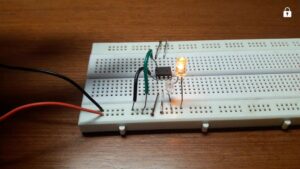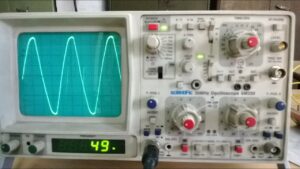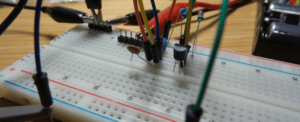Vidyasagar Academy Wishes a Very Happy, Healthy & Prosperous Diwali to all our Students & Teachers!
An operational amplifier (Opamp) is a versatile device which can be used to amplify AC as well as DC signals. It is manufactured in the form of integrated circuit package. It can perform different mathematical operations like addition, subtraction, integration, taking the derivative, comparison, etc. Hence it is known as operational amplifier. The most important section of Opamp is the differential amplifier. It is a circuit of two transistors which has very high gain and it rejects noise to produce high quality i.e. High Fidelity output with amplification.
This is the most popular study series of Everything about Operational Amplifiers on our website. We are extremely thankful to our visitors, teachers and students for their valuable feedback regarding the improvement of the study series…!
Prof. Dattaraj Vidyasagar (Series Author)
Fundamentals of Amplifier
Amplifier is a device or circuit, which increases strength of input signal in terms of either voltage or current. The process of increasing strength is called amplification. It works on external battery supply, takes up power from it, and then amplifies input signal. However, in general circuits of amplifier, external battery supply is not shown and it is understood that it is there!
There are two types of amplifiers: inverting amplifier and non-inverting amplifier. In inverting amplifier, input and output signals are out-of-phase. In non-inverting amplifier, they are in-phase.
The most important factor of amplifier is its gain. The gain of an amplifier is the ratio of output voltage to input voltage. It is denoted by Av. It is always greater than unity.
Amplifier is used in all types of electronic instruments like CRO, function generator, voltage regulators, tape recorder, VCR, VCD player, MP3 player, TV, computers and number of others.
Concept of Feedback
Feedback means connecting a fraction of output quantity back to input of a circuit. Feedback is always used in amplifier circuits. There are two types of feedbacks, positive feedback and negative feedback. When feedback is used in inverting amplifier, it is called negative feedback and when it is used in non-inverting amplifier it is positive feedback.
Input-Output Resistance of Amplifier
When current flows into input section of amplifier, it experiences opposition. This opposition is termed as input resistance Ri of amplifier. In the same way, when amplifier gives out signal, in the form of current, after amplification, it flows into its output circuit and experiences opposition. This opposition is termed as output resistance Ro of the amplifier. Mathematically –
Ri = Vi / Ii and Ro = Vo / Io
RC & DC Amplifier
In multistage amplification, when one stage is connected to next through capacitors and resistors it is called as RC amplifier. And when one stage is connected to next directly, it is called as direct-coupled DC amplifier.
The RC coupled amplifier is some-what better than Direct coupled amplifier. However, when quick and cheap amplifier circuit is required, then direct-coupled amplifier is used. But this amplifier has some drawbacks.
Drawbacks
Following are the main drawbacks of RC and DC types of amplifiers.
In RC coupled amplifier the capacitive reactance is high at low frequencies. So gain is low. At high frequencies, the gain becomes frequency dependent and so high frequency response is not uniform. It cannot amplify DC signal due to capacitors used in it.
The direct coupled amplifier has high gain. But it picks up more noise. The drift is also observed in it. When AC signal is amplified, it mixes with DC signal. So humming i.e. hissing sound is produced at the output.
In the next topic we shall see details of differential amplifier.





Hi! I realize this is sort of off-topic however I needed
to ask. Does building a well-established blog such as yours
take a massive amount work? I’m completely new to
blogging but I do write in my journal daily.
I’d like to start a blog so I will be able to share my personal experience and views online.
Please let me know if you have any recommendations or tips for brand new aspiring bloggers.
Thankyou!
Hi, of course this post is in fact nice and I have learned lot of things from it on the topic of blogging.
thanks.
I was wondering if you ever thought of changing the page layout of your site?
Its very well written; I love what youve got to say. But maybe you could
a little more in the way of content so people could connect with it better.
Youve got an awful lot of text for only having one or 2
images. Maybe you could space it out better?
This design is wicked! You obviously know how to keep a reader amused.
Between your wit and your videos, I was almost moved to start my
own blog (well, almost…HaHa!) Wonderful job.
I really loved what you had to say, and more than that,
how you presented it. Too cool!
I have been browsing on-line greater than 3 hours lately, but I never found any attention-grabbing article like yours.
It’s beautiful price sufficient for me. In my view, if all webmasters and bloggers made good content material as you probably did, the internet might be much more helpful than ever before.
I like the valuable information you provide in your articles.
I’ll bookmark your weblog and check again here
frequently. I am quite sure I will learn plenty of new stuff right here!
Best of luck for the next!